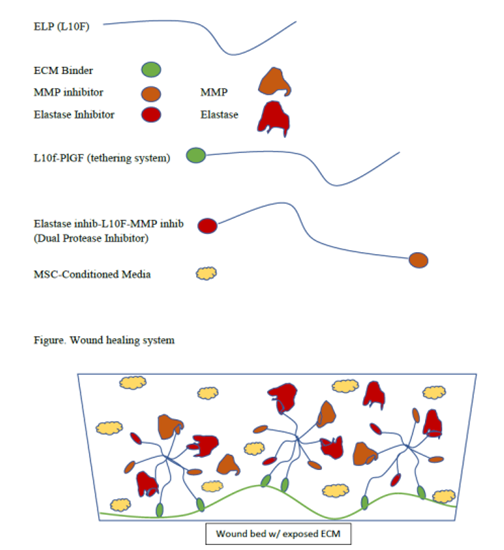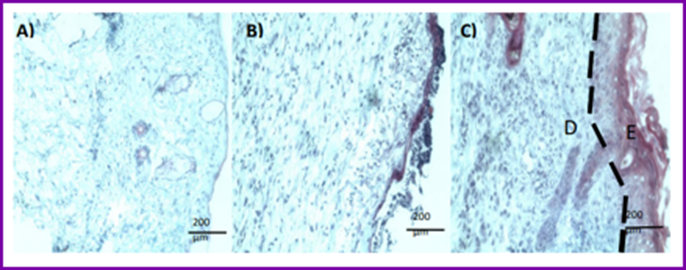Advantages:
- Inhibits multiple tissue proteases and promotes cell growth.
- Sustained release of the therapeutic at the wound site.
- Protease inhibition is easily editable to allow for further targeting of possible bacterial proteases.
- Can be applied dry, reconstituted, or embedded in materials.
Summary:
Wound healing is dependent on a balance between the degradation of damaged tissue and the deposition of new healthy tissue with a strong extracellular matrix (ECM). In chronic wounds a continuous high abundance of proteases are secreted by the body’s immune system that lay waste to even healthy tissue and impede growth factor mediated tissue deposition and wound healing.
Our researchers developed a multifunctional peptide-based protease inhibitor capable of inhibiting different proteases. This multifunctional and non-toxic protease inhibitor can be used in conjunction with conditioned media from stem cells (promoting cell proliferation) and tethering peptides (provide sustained therapeutic release) to make up a protein-based combination therapeutic capable of rebalancing wound healing towards minimal deconstruction with overpowering construction. This powder cocktail is easily produced and stored. It can be applied in harsh environments such as warzones, underserved communities, and even in other mammals like pets and livestock where fast wound healing is essential for better outcomes and infection minimization.

The image depicts the process of the wound healing system

Protein therapeutic promotes wound healing in a diabetic chronic wound mouse model (Masson’s Trichrome Stained Tissues). A) Untreated B) Treated with mesenchymal-stem cell conditioned media C) Treated with mesenchymal-stem cell conditioned media and protease inhibitor.
Desired Partnerships:
- License
- Sponsored Research
- Co-Development